Espalier
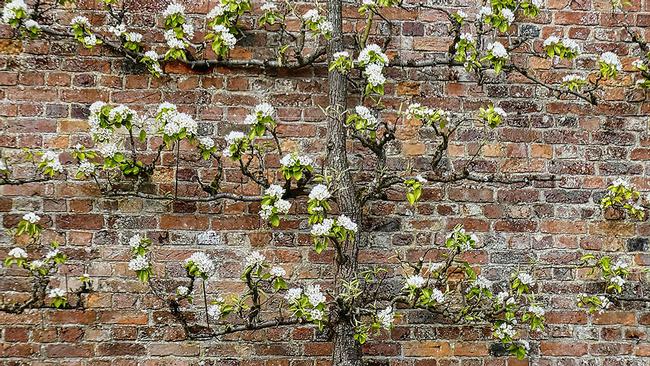
Creating an espalier is an especially fun and rewarding method of growing flowering and fruiting plants in a garden. The process has existed for many hundreds of years and, although challenging for complex forms, is achievable by even novice gardeners.
> What is an espalier?
> Forms of espalier
> Why espalier
> What plants can be espaliered
What is an espalier?
The word “espalier,” (pronounced “es-PAL-yer” or “es-pal-YAY”) is used in two ways:
- As a noun: To describe any woody plant that has been trained and pruned to grow in a flat plane against a wall, fence, or trellis or between support posts; and
- As a verb: To describe the technique of training and pruning a plant to this flat plane.
The term is French, but it comes from the Italian spalliera, meaning “something to rest the shoulder (spalla) against.” Romans developed the practice, but later generations of Europeans refined it into a rewarding, and sometimes exacting, art.
What are the forms or styles of espalier?
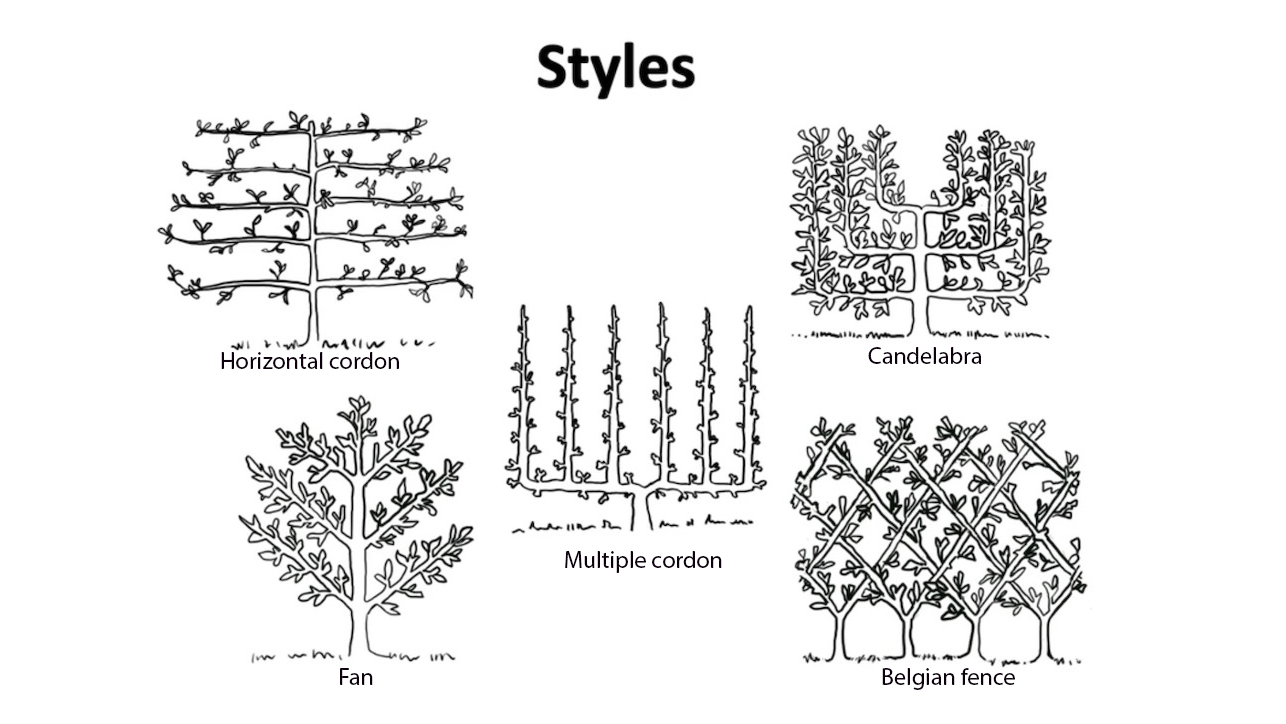
Why espalier?
There are many advantages to the espalier form.
- It is a space saver for small gardens or narrow areas.
- It provides a decorative element in a garden, drawing attention to – or hiding – a wall or fence.
- Fruit is easier to harvest.
- Espaliered plants can be grafted with multiple cultivars.
- If the espalier is grown against a wall, there is greater heat capture in the winter which provides more protection against frost damage.
- Pests are easier to manage.
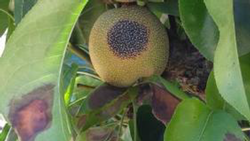
- There is a learning curve for the gardener, both in creating the espalier structure and in training and maintaining the plant;
- There are increased costs associated with creating the espalier structure; and
- There is increased risk of sunburned fruit and sunburned trunks and branches (which can become portals for diseases and boring pests).
A gardener should carefully consider these advantages and disadvantages before proceeding.
What plants can be espaliered?
Many types of fruiting and non-fruiting plants can be espaliered. For a comprehensive list, refer to this site.
Ease of espalier by fruit species:
Fruit trees are most commonly chosen to espalier, but there are degrees of difficulty, depending upon the plant:
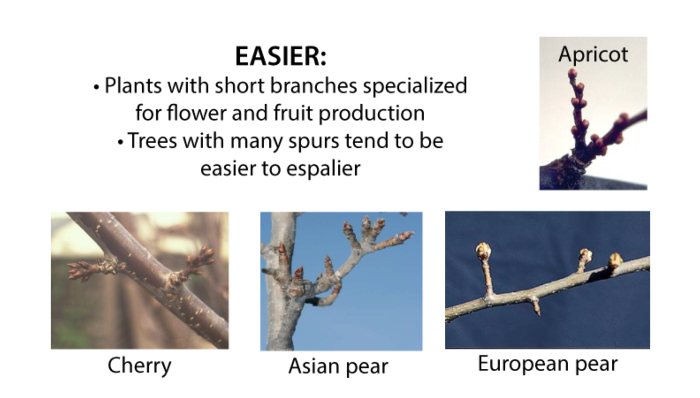
The reason is that some fruit trees bear fruit on spurs, and other fruit trees bear fruit on buds at or near the tips of their branches. Spur-bearing fruit trees are easier to espalier, because the gardener can remove a great deal of new growth without sacrificing productivity, as long as the spurs remain intact.
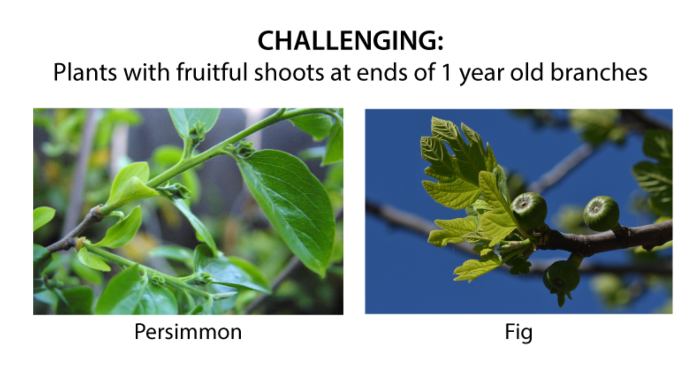
Tip-bearing fruit trees are more difficult to espalier, because the gardener will sacrifice productivity unless pruning is performed in a manner that removes all or portions of last year’s fruiting branches and encourages growth of new fruiting branches and new fruiting buds.

Whatever type of fruit tree a gardener chooses, it is best to purchase a plant with dwarf or semi-dwarf root stock. This will help to slow the annual growth of the plant, without compromising its fruit production.
